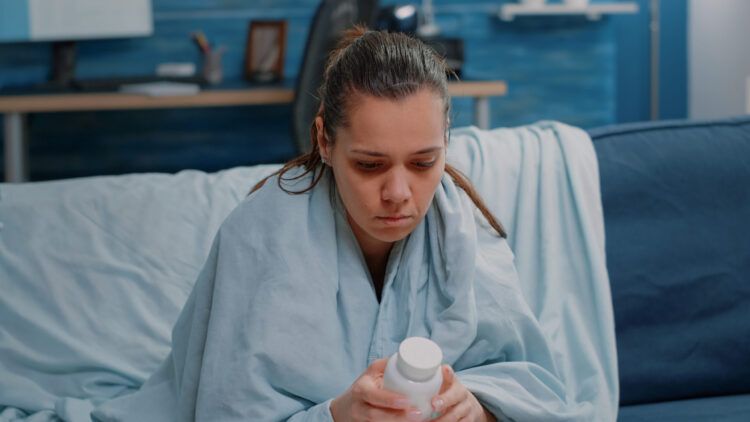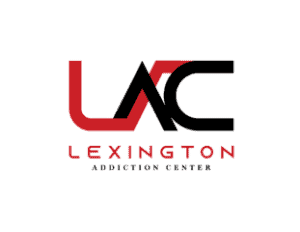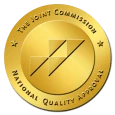Symptoms of Opioid Addiction
Kentucky still feels the ripple effects of the national opioid crisis: 1,410 Kentuckians died from drug overdoses in 2024, most involving opioids. Numbers like these underscore why spotting the symptoms of opioid addiction early can be life-saving.
Physical red flags—pinpoint pupils, nodding off, slowed breathing—often appear alongside behavioral shifts such as secretiveness or missing prescriptions. When these clues surface, timely help matters.
Lexington Addiction Center (LAC) makes that step easier, offering outpatient counseling and Medication-Assisted Treatment (MAT) right here in Lexington, KY. Whether you’re worried about a loved one or questioning your own use, knowing what to watch for is the first move toward recovery.
How Do Symptoms Vary Among Different Opioids?
Not all opioids hit the body the same way, and recognizing which drug is in play can fine-tune treatment decisions.
| Opioid | Common Brand/Street Names | Unique Signs & Symptoms | Extra Risks |
|---|---|---|---|
| Oxycodone | OxyContin®, Percocet® | Early euphoria, marked energy “burst” that fades into sedation; pupils often shrink to pinpoints | High crush-and-snort potential accelerates tolerance |
| Hydrocodone | Vicodin®, Norco® | Less intense rush than oxy but similar drowsiness and constipation; users may complain of chronic “flu-like” aches between doses | Acetaminophen combo strains the liver at high volumes |
| Morphine | MS Contin®, Kadian® | Heavy “nods” (head bobbing), itching, slow GI tract | IV use raises infection and vein damage risks |
| Fentanyl | “Fetty,” “Snowman” | Rapid onset—seconds if smoked; severe respiratory depression before classic nodding appears | Potency 50–100× morphine means micro-dose miscalculations can be lethal |
| Heroin | Smack, H, Dope | Warm “rush,” flushed skin, track marks; pronounced withdrawal within 6–12 hrs | Street cuts with xylazine or fentanyl worsen overdose odds |
| Tramadol | Ultram® | Milder high but adds seizure risk; mixed opioid and SNRI action can mask traditional cues | Interacts with antidepressants, causing serotonin syndrome |
Whether pills, patches, or powder, every variant can trigger the broader signs and symptoms of opioid addiction—tolerance, cravings, and withdrawal. Knowing the specific substance helps clinicians choose the safest taper, the right Medication-Assisted Treatment, and targeted harm-reduction advice (e.g., fentanyl test strips).
Is Opioid Addiction Really a Disease?
Yes. Leading medical groups classify opioid addiction as a chronic brain disease, not a moral failure. Like diabetes or hypertension, it involves long-lasting changes—in this case, to brain-reward circuitry that governs motivation and self-control.
Those changes explain why opioid addiction and dependence symptoms like cravings, escalating doses, and painful withdrawal persist even when someone wants to quit.
Clinicians diagnose the condition using DSM-5 criteria for substance use disorders; meeting just two of eleven signs confirms symptoms of opioid use disorder and signals the need for professional care.
Recognizing addiction as a disease removes blame, guides evidence-based treatment, and reminds us that, like any chronic illness, long-term management and support lead to the best outcomes.

What Causes Someone to Develop Opioid Dependence?
Opioid dependence rarely springs from a single choice; it’s a slow weave of biology, environment, and circumstance.
Genetics lay the first thread. Certain gene variants can make the brain’s reward circuitry more responsive to opioids, raising the odds that casual use escalates. Environmental factors tighten the knot: growing up where pills are easily shared, or in communities hit hard by job loss and chronic pain, normalizes medication misuse.
Add mental-health challenges like anxiety, depression, or unresolved trauma and opioids quickly become a form of self-medication that’s hard to surrender.
Finally, well-intended prescription exposure can tip the balance. A short post-surgical script that isn’t tapered, or pills left over in a family medicine cabinet, gives dependence the foothold it needs.
Together, these forces reshape brain chemistry, leading to tolerance, cravings, and other signs of opioid dependence that feel less like choices and more like survival tactics. In the next section, we’ll break down the earliest red flags that signal this shift from use to dependence.

What Are the First Signs of Opioid Use?
Early opioid use signs can be subtle enough to pass for fatigue or stress until they start piling up. Physically, look for pinpoint pupils, unexplained drowsiness at odd hours, and slowed breathing that borders on shallow panting when the person nods off.
You might also notice frequent colds or “flu-like” complaints as the body rebounds between doses. These are classic signs and symptoms of opioids wearing off.
Behaviorally, missing prescription bottles, empty pill sleeves, or sudden “doctor-shopping” for stronger meds suggest escalating risk.
Cash disappears faster, personal items get pawned, and once-reliable routines—work shifts, school attendance, family dinners—begin to unravel.
Psychologically, mood swings steal the show: bursts of euphoria give way to irritability, anxiety, or an uncharacteristic fog that lingers for days. Some people isolate, while others grow defensive at the slightest question about their habits, both textbook signs of opioid use.
Spotting these patterns early gives families and clinicians a critical window to intervene before dependence and the stakes grow even higher.

How Do Signs and Symptoms of Opioid Addiction Worsen Over Time?
At first, opioid addiction signs and symptoms can look like a bad habit, then they snowball. Tolerance builds, forcing higher or more frequent doses just to feel “normal.”
When the drug level dips, withdrawal slams in with chills, cramps, and anxiety, driving a compulsive search for more pills or powder. Jobs, classes, and parenting duties slide as neglected bills pile up, sparking financial trouble or even theft.
Missed court dates for small infractions can spiral into bigger legal issues. Social circles shrink: friends who don’t use are ghosted; new companions revolve around scoring.
Family gatherings feel tense, so isolation becomes the path of least resistance. Together, these escalating red flags turn a private struggle into a visible crisis and one that demands professional help before consequences deepen further.
What’s the Difference Between Opioid Withdrawal Symptoms and Long-Term Health Effects?
| Phase | Timing | Typical Symptoms |
|---|---|---|
| Early | 6–12 hours | Restlessness, watery eyes, yawning |
| Peak | 24–72 hours | Muscle aches, diarrhea, vomiting, high cravings |
| Sub-acute | 3–7 days | Fatigue, insomnia, mood swings |
| PAWS* | Weeks–Months | Anxiety, depression, spotty concentration |
*Post-Acute Withdrawal Syndrome
Long after the sweats and cramps fade, lingering health risks remain. Chronic opioid use can disrupt hormone production, leading to low testosterone or menstrual irregularities. Slowed gut motility causes constipation and other GI issues that sometimes require surgery.
Mood doesn’t escape unscathed. Persistent depression and anhedonia (inability to feel pleasure) can shadow recovery, raising relapse risk.
Knowing these long-term dangers underscores why treatment can’t stop at detox; ongoing medical and mental-health care is crucial to rebuild a fully functioning life.
How Can You Tell If Opioid Use Has Become Addiction?
Clinicians rely on the DSM-5, but you can do a quick self-check. If you notice two or more of these signs and symptoms of opioid addiction within 12 months, dependence is likely:
- Taking larger or longer doses than planned
- Repeated failed attempts to cut back
- Spending lots of time getting, using, or recovering
- Cravings that hijack your day
- Missing work, school, or family events
- Continuing despite health or relationship damage
- Giving up hobbies you loved
- Using in risky situations (e.g., driving)
- Building tolerance—needing more for the same effect
- Feeling sick when you stop (withdrawal)
- Continuing despite legal or financial fallout
Still unsure? Call Lexington Addiction Center’s free, 24/7 phone assessment. A nurse will walk you through the next steps in total confidence.
Why Do Anxiety, Depression, or Trauma Intensify Opioid Addiction Symptoms?
Mental-health challenges and opioid misuse fuel each other in a relentless loop. Anxiety or PTSD can spike stress hormones and heighten physical pain, making opioids feel like instant relief. Unfortunately, that short-term calm rewires the brain’s reward system, deepening cravings and dulling natural mood-regulators like serotonin.
Over time, the drug’s rebound anxiety or depressive “crash” feels worse than the original problem, so the cycle restarts at higher doses. This is the essence of dual diagnosis: two conditions amplifying one another.
Effective care treats both at once—therapy for panic or trauma alongside MAT for cravings—so the feedback loop finally breaks.
How Can Families and Providers Prevent Opioid Addiction?
Preventing opioid addiction starts long before the first prescription is filled:
- Safe prescribing: Use the lowest effective dose, short durations, and check state PDMP databases.
- Secure storage: Lock medications at home; never share pills.
- Proper disposal: Return leftovers to take-back kiosks or mix with coffee grounds before trashing.
- Naloxone on hand: Keep overdose-reversal kits in homes, clinics, and schools; teach everyone how to use them.
- Non-opioid pain care: Explore NSAIDs, physical therapy, acupuncture, or nerve blocks first.
- Patient education: Explain risks, taper plans, and warning signs at every visit.
These simple steps shrink exposure, catch misuse early, and save lives.
What Opioid Addiction Treatment Options Work Best?
- Methadone
Full agonist; best for severe dependence or people who’ve tried everything else. Daily clinic visits can feel restrictive but offer built-in accountability.
- Buprenorphine (Suboxone®/Subutex®)
Partial agonist; eases withdrawal with a lower overdose risk. Office prescriptions mean fewer clinic trips, yet some clients need dose adjustments to feel truly stable.
- Naltrexone (Vivitrol®)
Antagonist; blocks the “high” entirely and has zero abuse potential. You must be fully detoxed first, which can be a hurdle.
Medications alone aren’t magic. Cognitive-Behavioral Therapy (CBT) rewires thought patterns that trigger use. Contingency management adds small rewards—gift cards, bus tokens—for drug-free tests, boosting motivation.
Finally, peer recovery groups provide lived-experience guidance you can’t get in a doctor’s office. Together, these tools create a safety net proven to cut relapse risk and improve quality of life.
Which Programs at Lexington Addiction Center Treat Opioid Addiction Symptoms?

Partial Hospitalization Program
Full-day, weekday treatment that blends medical monitoring, group therapy, and individual counseling. Clients return home or to a sober residence each evening, making PHP the ideal bridge between inpatient detox and outpatient care.

Intensive Outpatient Program
Several therapy sessions per week that combine CBT skills, process groups, and recovery education for those who need more structure than standard outpatient care.

Outpatient Program
One-to-one or small-group sessions—flexible and maintenance-focused—for continued progress after higher levels of care.

Medication-Assisted Treatment (MAT) Clinic
Same-site prescribing of buprenorphine or naltrexone, plus brief medical check-ins and relapse-prevention counseling during one convenient visit.
If you require medical detox or residential stabilization first, LAC coordinates with trusted local partners and handles the warm hand-off so treatment momentum never stalls. Admissions specialists also provide fast, no-cost insurance verification to remove financial guesswork from your first step into recovery.
How Do You Manage Symptoms of Opioid Addiction Long Term?
Recovery doesn’t end at discharge; it shifts into maintenance mode. LAC’s alumni program hosts weekly peer meetings and quarterly social events that keep you plugged into the sober community. Live too far away? Join virtual check-ins or drop into a moderated chat any evening. For added stability, staff can connect you with reputable sober-living homes that reinforce routines and accountability.
Day-to-day habits matter, too. Aim for 30 minutes of exercise most days to boost endorphins, follow a consistent sleep schedule, and practice quick stress-management hacks like box breathing, journaling, or a five-minute walk.
Layer these lifestyle tools over ongoing therapy or MAT, and the likelihood of sustained sobriety climbs dramatically.
What Else Should You Know About Opioid Addiction Symptoms?
Ready to Address Symptoms of Opioid Addiction in Lexington, KY Today?
You don’t have to decode this alone. Call Lexington Addiction Center’s 24/7 team or reach out online for an immediate, judgment-free conversation. One quick assessment can match you with same-day MAT, therapy, or a trusted detox partner—whatever gets you safer, faster. Reach out now; a healthier chapter is only one conversation away.
 | Medically Reviewed By: Board-Certified Psychiatrist and Addictionologist |
 | Clinically Reviewed By: Board Certified Clinical Social Worker |
Yes, Your Insurance Covers Detox and Rehab Treatment
Services

Contact Us Today

Addiction and co-occurring disorders don’t have to control your life. Lexington Addiction Center is waiting with open arms to give you the tools necessary for lasting change. Reach out to us today to learn more.
Get Family Support Now
Supporting Families Through Recovery
We understand addiction affects the whole family. Our comprehensive family program helps rebuild trust and restore relationships.
Weekly Family Therapy Sessions
Educational Workshops
Support Groups
Communication Skills Training
Get Family Support Now



 859-681-7823
859-681-7823